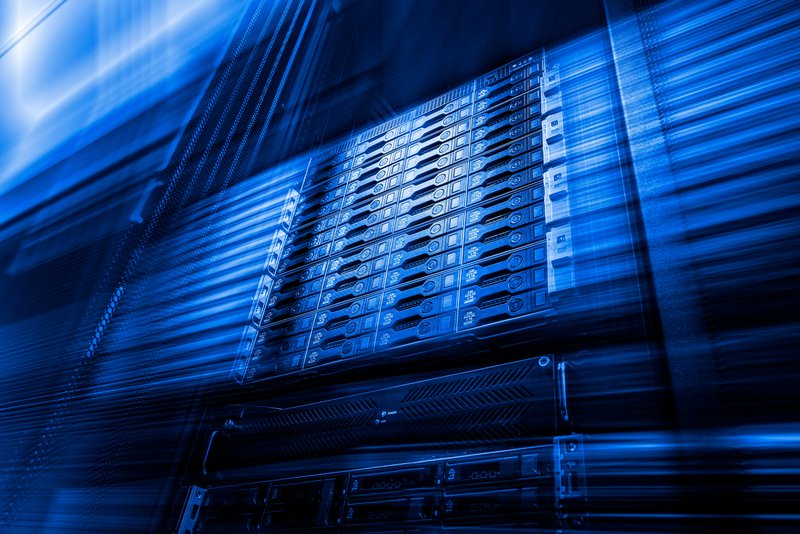Liquid cooling has earned a reputation as the top data center cooling technology, and for a good reason—it’s more effective than air cooling for high-speed computing and other activities. And now, new liquid immersion technology has made liquid cooling the winning choice for practically any data center cooling needs.
Liquid immersion cooling offers particular advantages. For instance, the liquid coolant protects servers in edge data centers, and the high cooling capacity is ideal for blockchain computing, artificial intelligence (AI), and the Internet of things (IoT). Cloud hosts and hyperscalers are among those most eager to use liquid cooling technology.
The main benefits of liquid cooling include higher capacity, lower cost, and lighter impact on the environment. Additional advantages are the tech’s silent operation and protection against debris, oxidation, and other threats to IT assets. The server area also remains at a more comfortable temperature, and liquid immersion is much simpler to deploy in indoor and outdoor spaces.
Still hesitant about liquid cooling? Let’s look at the different types of cooling methods and how liquid immersion cooling and air cooling compare.

Types of Cooling
Data center cooling comes in several varieties. The two main categories are air cooling and liquid cooling, based on which material they use as a coolant. This is a bit of an oversimplification, since some types of cooling use both air and liquid. However, as a generalization, there are older air cooling solutions and newer liquid cooling solutions.
Among the specific air cooling techniques is the rear door heat exchanger (RDHx), which uses a door on the rack to pass server heat from air into a liquid. There’s also cold plate (or direct-to-chip), which runs piping into a metal surface against the processors to transfer the heat into a liquid.
More recently, we’ve seen the development of two types of liquid immersion cooling: two-phase and single-phase. These systems lower the entire servers into a liquid without any intermediary material. In a two-phase immersion cooling system, the liquid coolant boils off to remove heat. In the single-phase immersion cooling system, the liquid coolant is pumped to where it can release the heat.
Each method has its purpose, but they differ considerably in performance. Therefore, it’s important to know how to decide which type of cooling to use for your data center.
How to Choose a Cooling Solution
To choose a cooling solution that will deliver consistent long-term satisfaction, it’s important to consider several metrics relevant to performance. Some of the main determinants include how quickly and densely the solution can cool, how much it costs, and its effects on the environment. There are also safety issues and whether the solution is practical to deploy.
The costs involved can be divided into capital expenses and operating expenses. Systems may cost more upfront or in the long-term, both of which are important considerations. There are also indirect costs to consider. For example, a cooling system may require extensive infrastructure additions in the data center.
Another issue affecting cooling systems is the degree to which they can withstand a harsh environment. This matters especially for edge deployments, but even regular data centers can be exposed to adverse conditions. Some cooling systems are quite sensitive, while others offer protection against the elements.
You can consider any number of other variables that may be relevant to your decision. For instance, cooling systems differ substantially in how much noise they make, how easy it is to service hardware, and the availability of systems and parts. Ultimately, you must decide what matters for your data center.
Liquid Can Cool Far More Than Air
Liquid is a far more efficient coolant than air, carrying away well over a thousand times as much heat. Because immersion cooling fully encompasses servers with liquid coolant, it ranks as the most powerful cooling solution.
With increasingly hotter GPUs and CPUs, air cooling can no longer keep pace. Green Revolution Cooling’s (GRC) liquid immersion cooling system can handle far more than a hundred kilowatts per rack. It also cools more densely so you use less precious floor space.
Liquid’s superior cooling ability has already made it a necessity for high-performance computing. With processors becoming more powerful, liquid is the right choice for broader applications. It makes sense to use immersion cooling for any size data center, and GRC offers systems for many different needs.
Liquid Cooling Costs Less Than Air Cooling
People often think of liquid cooling as a premium technique that must cost more. With GRC’s innovative technology, however, data centers are actually saving money by using liquid instead of air. In fact, it cuts both capital and operating expenses by half.
GRC’s immersion systems run so efficiently that you spend less on electricity. The IT parts are protected from corrosion and wear, so you also save on maintenance and replacement costs. Finally, servers run without fans so you save even more on electricity and wear-induced equipment costs.
The design is so simple and has so few dependencies that it eliminates many of the challenges of data center construction. That not only saves money, but it also cuts out major delays during builds.
Liquid Cooling Is More Environmentally Friendly

Sustainability is one of the big advantages of liquid cooling. In recent years, data centers have been taking flak for their thoughtless waste of resources. Liquid immersion cooling is now seen as one of the key approaches that can fix the data center climate catastrophe.
Traditional air cooling systems consume an excess of electricity and water, producing carbon emissions. By contrast, GRC’s liquid immersion cooling system eliminates most cooling electricity and carbon emissions and all water waste.
Another environmental advantage of liquid immersion cooling stems from the liquid’s ability to transport heat. As a result, you can recycle waste heat, selling it or using it yourself instead of letting it add to the global warming problem.
Use the Better Cooling System With GRC
Liquid immersion cooling removes more server heat for less money and is far better for the environment. This combination of advantages makes immersion the better cooling system, and it’s now available for data centers globally.
Join the green revolution and deploy the smartest cooling technology. It will improve your budget and power envelope, and it’s one of the best steps you can take toward your environmental sustainability goals. Moreover, your data center employees will have a much better work environment, since liquid immersion cools silently and uses only a small amount of floor space. Contact GRC and start enjoying the advantages of the better cooling solution today.





